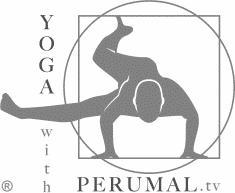PREPARATION RULE
GOLDEN RULE
JOINT PREPARATION
JOINT PREPARATION
In the 4th of the 10-part series on the elements of yoga practice, we talk about the preparation of the joints. A joint is any part of the body in which two or more bones make contact. They are quite sensitive and one must take care of them properly to avoid injuries.
Maybe you have already experienced joint pain a few times in your life. It could have been that day when after a long period of inactivity, you decided to play with your child; and at one point when you stopped firmly to switch directions while running, you felt a mild pulling sensation in the knee. A few hours later, the knee started aching with pain and stiffness.

Slide title
Write your caption hereButton

Slide title
Write your caption hereButton
Or that other time when, after a long time without exercising, you decided to return to sports and fitness activities, just to cut short your comeback due to wrist, shoulder or other joint pain, which makes you completely lose motivation to have an active life.
Can you relate to any of these situations? If your answer is yes, it’s quite possible that your mistakes was to dive into exercise after a long absence, without addressing the joints first. That’s the perfect recipe to put yourself at risk of injury!
Most yoga classes work on the basics of muscular strength, flexibility, and breathing. Depending on the teacher or style, we often find these fundamentals in varying levels. But the joints are often dismissed. This is something that often doesn’t get attention or is considered to be addressed during the typical postures as a by-product. But the reality is that new yoga practitioners without a fitness background need to warm up the joints first.
What happens after a long period of inactivity is that the muscles develop faster than the tendons because they receive more blood. For that reason, people with long absences from physical activity must return lightly on their routines so that the tendons have time to strengthen and catch up with the muscular development. Otherwise the tendons cannot accommodate the increasing pressure the muscles are creating, resulting in strain.

Slide title
Write your caption hereButton

Slide title
Write your caption hereButton
Let us look at some easy to do joint preparation exercises to achieve safer yoga practices:
• Shoulders: Double Elbow Rotations. Place your fingertips together and then put them onto your shoulders. Once that is accomplished, turn your elbows in circles as wide as possible insuring that you touch both elbows together in front of the chest. Try 25 at first and over time build up to 50. Always touch your elbows together in front of the chest to experience the full effect of this great joint preparation exercise
Neck:
Keep the back straight and circle the head 10 times in each direction while standing. Feel your neck throughout the exercise while rotating the head around the neck. Do not push into any neck pains. Move slowly and work around any pains.

Slide title
Write your caption hereButton

Slide title
Write your caption hereButton
Wrists:
Keep the arms extended in front of you and open and close your fingers. Extend and flex the fingers completely squeezing them as tightly as possible into a fist. Open and close the fingers as fast as possible for a count of 50.
Hips:
Open your feet a little wider than your shoulders. Place the hands on the hips and rotate them in circles 25 times in each direction. Do this as if you are trying to use an imaginary hula hoop with both hands on the waist. Perform all circular joint exercises in both directions..

Slide title
Write your caption hereButton

Slide title
Write your caption hereButton
Establish a regular program of joint routines. Remember that yoga is not only about stretching and breathing, but the joint preparation leading to strength building of muscles is of vital importance too. Deep stretching alone will lead to over-loosening of joints if they are not continually conditioned.
Practice yoga for your joints consistently and properly to avoid being side-lined from your practice. This way, it becomes easier to maintain regularity and avoid the demoralizing feeling of aches and pains. Just don’t forget one thing: even when yoga tries to avoid most pain, at times there will be some “positive aches” along the path of practice, don’t let them bring you down.
Note:
Anatomy of Hatha Yoga page 18 – Aches and pains frequently develop if you attempt extreme stretches before you have first developed the strength and skill to protect the all-important joints. Unless you are already a weightlifter or body builder, stretching and becoming flexible should be a secondary concern.
Anatomy of Hatha Yoga page 18 – Aches and pains frequently develop if you attempt extreme stretches before you have first developed the strength and skill to protect the all-important joints. Unless you are already a weightlifter or body builder, stretching and becoming flexible should be a secondary concern.

Slide title
Write your caption hereButton
YOGA RETREATS
ITALY
MOROCCO
Follow us
© 2023 Perumal Koshy | All Rights Reserved
© 2024 Perumal Koshy | All Rights Reserved













